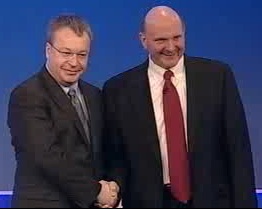
Continuing to defend his new company’s make-or-break partnership with Microsoft, Nokia CEO Stephen Elop told a group of Finnish journalists that a key factor in deciding to go with Windows Phone was being convinced that Nokia could bring Windows Phones to market at a low prices, and that the company can do it in a hurry. The Windows Phone platform debuted in October 2010 and, so far, has been restricted to a relatively small collection of handsets that occupy the upper echelons of smartphone pricing. Nokia says it can bring prices for Windows Phones down to make them more appealing to consumers.
“We have become convinced that we can do that very quickly,” Chief Executive Stephen Elop said, according to Reuters.
The obvious way to achieve that goal will be through scale: if Nokia can put its manufacturing juggernaut behind Windows Phone, it can likely bring the cost of individual handsets well below the current market point for Windows Phone devices. However, there may only be so much Nokia can do: Microsoft’s Windows Phone platform set fairly rigid hardware requirements for OEMs, and (so far) the only chipsets approved for use in Windows Phone devices are from Qualcomm. Qualcomm and Nokia have a long history of patent litigation over implementations of CDMA and GSM technologies, even though Nokia officially bowed out of the CDMA market in 2006.
For all the press that the Nokia/Microsoft deal has generated—and the negative impact on Nokia’s stock price—it may be important to remember that there’s nothing official yet. The companies expect to spend at least a few months hammering out all the contractual details of the partnership…which, at the very least, will be a few more months of Nokia falling behind the world’s broader smartphone market.


